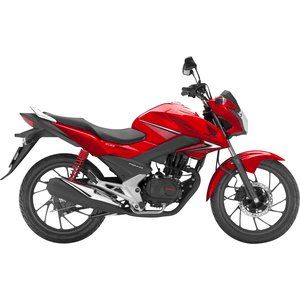Honda CB125F (2015-2016) Review: The Everyday Champion for New Riders
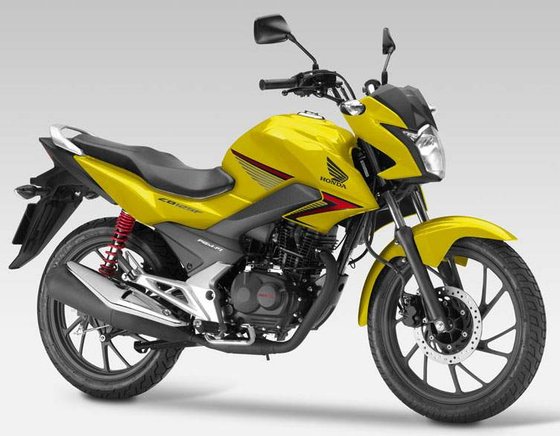
Introduction
The Honda CB125F represents a critical entry point into motorcycling for thousands of riders worldwide. As Honda’s answer to the 125cc commuter segment, this generation (2015-2016) refined an already proven formula with modern touches, fuel efficiency, and a design that punches above its weight class. After spending a week with this machine, it’s clear why it remains a staple for new riders and urban commuters – even years after its release. Let’s break down what makes this humble single-cylinder workhorse tick.
Design & Build Quality: Understated Confidence
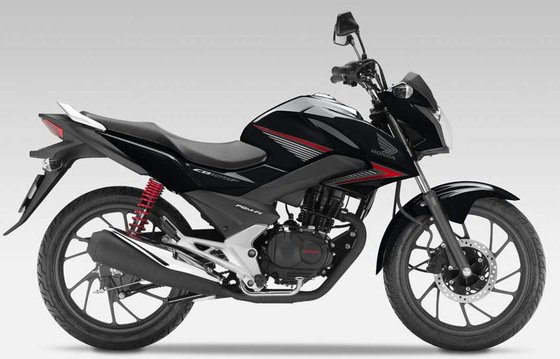
The CB125F adopts Honda’s "Neo Sports Café" DNA seen in its larger siblings like the CB500F, blending minimalist bodywork with functional aggression. The 18-inch cast aluminum wheels and angular fuel tank give it a grown-up aesthetic, while the 774mm (30.4-inch) seat height ensures accessibility. The steel backbone frame feels reassuringly solid, though the plastic panels and budget switchgear remind you of its entry-level status.
Honda claims weather-resistant components, and it shows: exposed fasteners show minimal corrosion, and the wiring harness is neatly tucked away. The analog speedometer (with digital odometer) is basic but legible, and the halogen headlight does an adequate job for city riding. Color options were limited, but the vibrant "Pearl Sunbeam Yellow" tested here adds a youthful flair.
Engine & Performance: Efficiency First, Fun Second
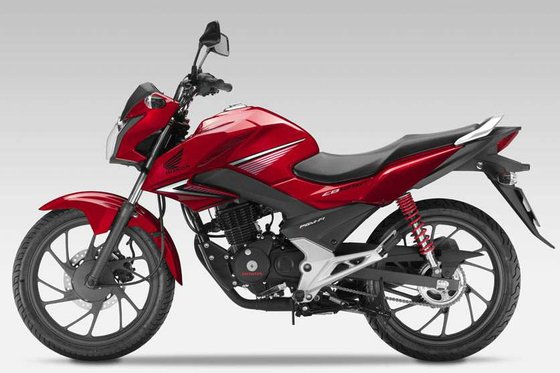
The Heart of the Matter
The 124.7cc air-cooled SOHC 2-valve single isn’t here to set speed records. With 10.5 HP @ 7,750 rpm and 10.2 Nm (7.5 lb-ft) of torque peaking at 6,250 rpm, acceleration is leisurely – 0-60 km/h (0-37 mph) takes about 6 seconds. But where this engine shines is its creamy-smooth operation, thanks to the balancer shaft introduced in 2015. Vibrations are nearly absent below 70 km/h (43 mph), making it ideal for stop-and-go traffic.
Transmission & Fuel Economy
The 5-speed gearbox is a highlight. Shifts are light and precise, with a clutch pull softer than a morning yoga session. Keep the revs between 4,000-6,500 rpm, and the CB125F will sip fuel at a claimed 120.7 mpg (51.3 km/l). That translates to a theoretical range of 667 km (414 miles) from its 13-liter tank – enough to outlast your bladder on long hauls.
Riding Impressions
Around town, the CB125F feels zippy and forgiving. The fuel injection (a rarity in this class) delivers crisp throttle response, eliminating the cold-start drama of carbureted rivals. On open roads, it struggles above 85 km/h (53 mph), but the upright riding position minimizes wind fatigue. This isn’t a highway star, but it’ll handle short stints at 90 km/h (56 mph) if you tuck in.
Handling & Braking: Predictability Over Pizzazz
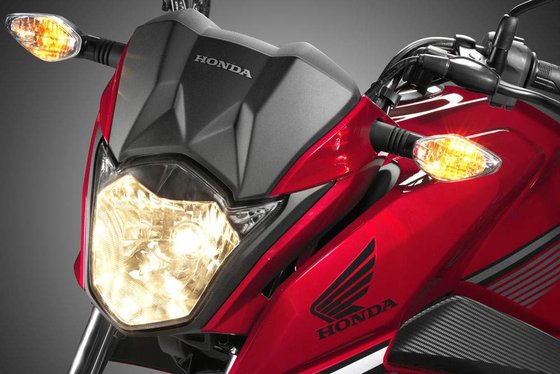
The non-adjustable 31mm telescopic fork and preload-adjustable twin shocks are tuned for comfort, soaking up potholes without wallowing. At 129 kg (284 lbs) wet, the CB125F flicks through traffic with bicycle-like ease. The 1295mm (51-inch) wheelbase strikes a balance between stability and agility, though the IRC tires feel vague at maximum lean.
Braking is adequate, not exciting. The front 240mm disc with a dual-piston caliper provides decent bite, but the rear drum requires a firm stomp. ABS wasn’t offered, so new riders should practice progressive braking – especially in the wet.
Competition: How It Stacks Up
1. Yamaha YBR125
- Pros: Cheaper, kick-start backup.
- Cons: Carbureted (less refined), softer suspension.
- Verict: The YBR125 suits tighter budgets, but the CB125F’s fuel injection and build quality justify the premium.
2. Suzuki GN125
- Pros: Lower seat (735mm), retro styling.
- Cons: Heavier, drum front brake.
- Verict: The GN125 appeals to cruiser enthusiasts, but the Honda is sportier and more versatile.
3. KTM 125 Duke
- Pros: 15 HP, aggressive styling, ABS.
- Cons: Higher price, firm seat.
- Verict: The Duke is for thrill-seekers; the CB125F is for pragmatists.
Maintenance: Keeping It Simple
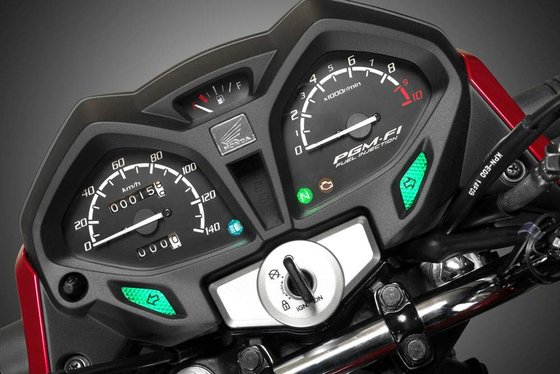
Key Service Points
- Valve Adjustments: Every 4,000 km (2,485 miles). Intake: 0.08mm ±0.02mm (0.0031”), Exhaust: 0.12mm ±0.02mm (0.0047”).
- Oil Changes: Every 6,000 km (3,728 miles) with SAE 10W-30. Capacity: 0.8L (0.85 qt) with filter.
- Chain Care: 122-link chain. Clean and lube every 500 km (311 miles). Replace at 20,000 km (12,427 miles).
Common Upgrades
- Tires: Swap IRCs for Michelin Pilot Streets for better wet grip.
- Seat: A gel insert reduces numbness on long rides.
- LED Lighting: Boost visibility with aftermarket bulbs.
Why MOTOPARTS.store?
We stock OEM-spec parts like NGK CR7EIX spark plugs, DID chains, and EBC brake pads. For accessories, explore our range of GIVI racks and Oxford heated grips – perfect for extending your riding season.
Final Thoughts
The Honda CB125F isn’t about pushing boundaries; it’s about delivering bulletproof reliability with just enough flair to keep you smitten. It’s the two-wheeled equivalent of a Toyota Corolla – and that’s a compliment. For new riders seeking a stress-free entry into motorcycling or commuters tired of parking fees, this Honda remains a compelling choice.
Ready to personalize your CB125F? Explore MOTOPARTS.store’s curated selection of upgrades tailored for this generation – because even trusty steeds deserve a little sparkle.
Specifications sheet
| Engine | |
|---|---|
| Stroke: | Four-stroke |
| Max power: | 8 kW | 11.0 hp |
| Max torque: | 10 Nm |
| Fuel system: | Fuel Injection |
| Lubrication: | Wet sump |
| Max power @: | 7750 rpm |
| Displacement: | 125 ccm |
| Max torque @: | 6250 rpm |
| Configuration: | Single |
| Cooling system: | Air cooled |
| Compression ratio: | 9.2:1 |
| Number of cylinders: | 1 |
| Dimensions | |
|---|---|
| Wheelbase: | 1295 mm (50.9 in) |
| Wet weight: | 129 |
| Seat height: | 775 mm (30.5 in) |
| Overall width: | 765 mm (30.1 in) |
| Overall height: | 1080 mm (42.5 in) |
| Overall length: | 2035 mm (80.1 in) |
| Ground clearance: | 160 mm (6.3 in) |
| Fuel tank capacity: | 13 L (3.4 US gal) |
| Drivetrain | |
|---|---|
| Final drive: | chain |
| Chain length: | 122 |
| Transmission: | 5-speed |
| Rear sprocket: | 45 |
| Front sprocket: | 15 |
| Electrical | |
|---|---|
| Ignition: | Digital CDI |
| Starting: | Electric |
| Maintainance | |
|---|---|
| Rear tire: | 90/90-18 |
| Engine oil: | 10W30 |
| Front tire: | 80/100-18 |
| Break fluid: | DOT 4 |
| Spark plugs: | NGK CPR7EA-9, NGK CR7EIX |
| Spark plug gap: | 0.8–0.9 mm |
| Forks oil capacity: | 0.29 |
| Engine oil capacity: | 1.0 |
| Engine oil change interval: | Every 5000 km or 12 months |
| Valve clearance (intake, cold): | 0.06–0.10 mm |
| Valve clearance (exhaust, cold): | 0.10–0.14 mm |
| Recommended tire pressure (rear): | 2.0 bar (29 psi) solo, 2.3 bar (33.4 psi) with passenger |
| Recommended tire pressure (front): | 1.75 bar (25.4 psi) |
| Chassis and Suspension | |
|---|---|
| Frame: | Steel backbone |
| Rear brakes: | 130 mm drum |
| Front brakes: | Single 240 mm disc, 2-piston caliper |
| Rear suspension: | Dual rear shocks with 5-step spring preload adjustment |
| Front suspension: | 31mm Telescopic fork, non-adjustable |
| Rear wheel travel: | 70 mm (2.8 in) |
| Front wheel travel: | 118 mm (4.6 in) |



